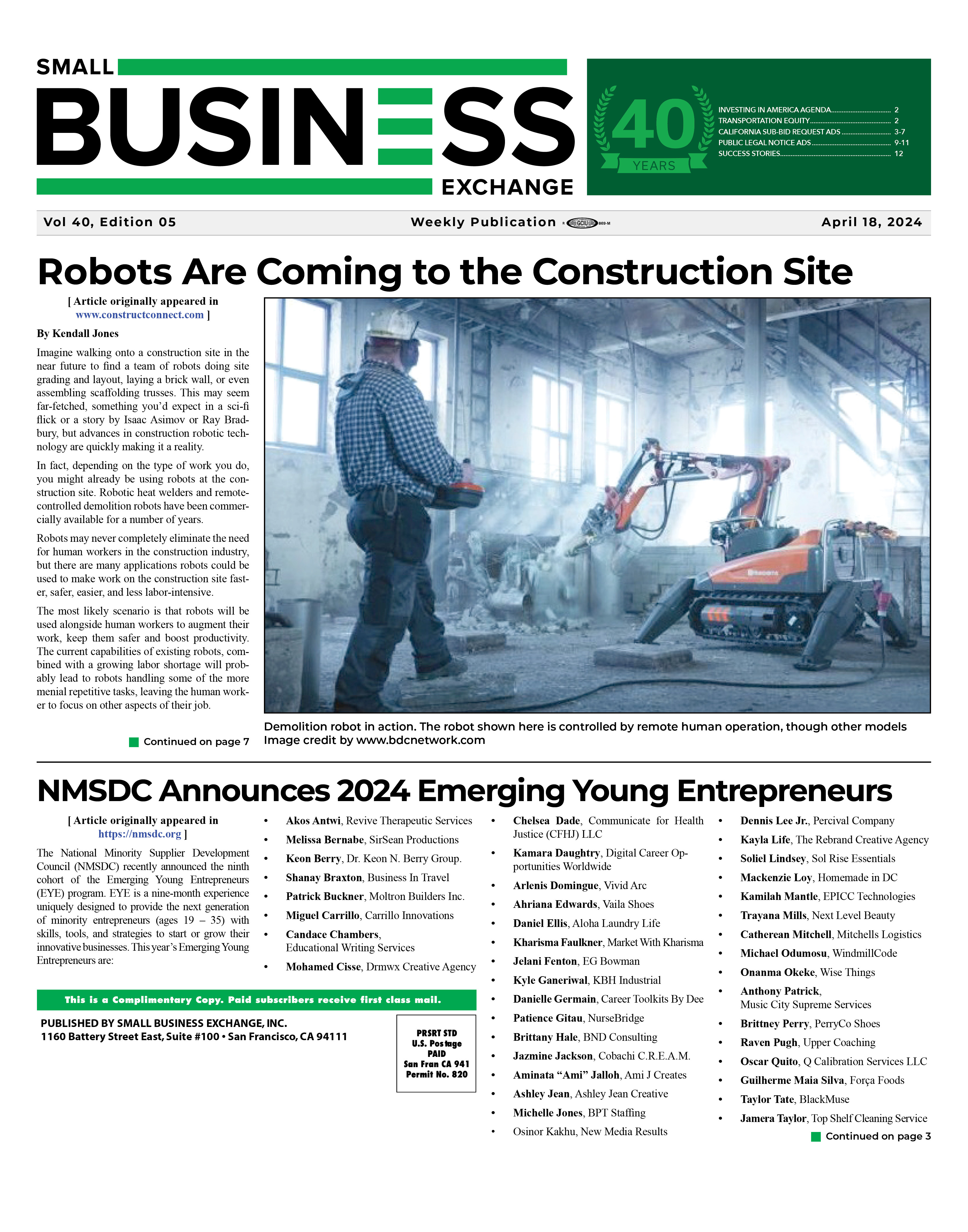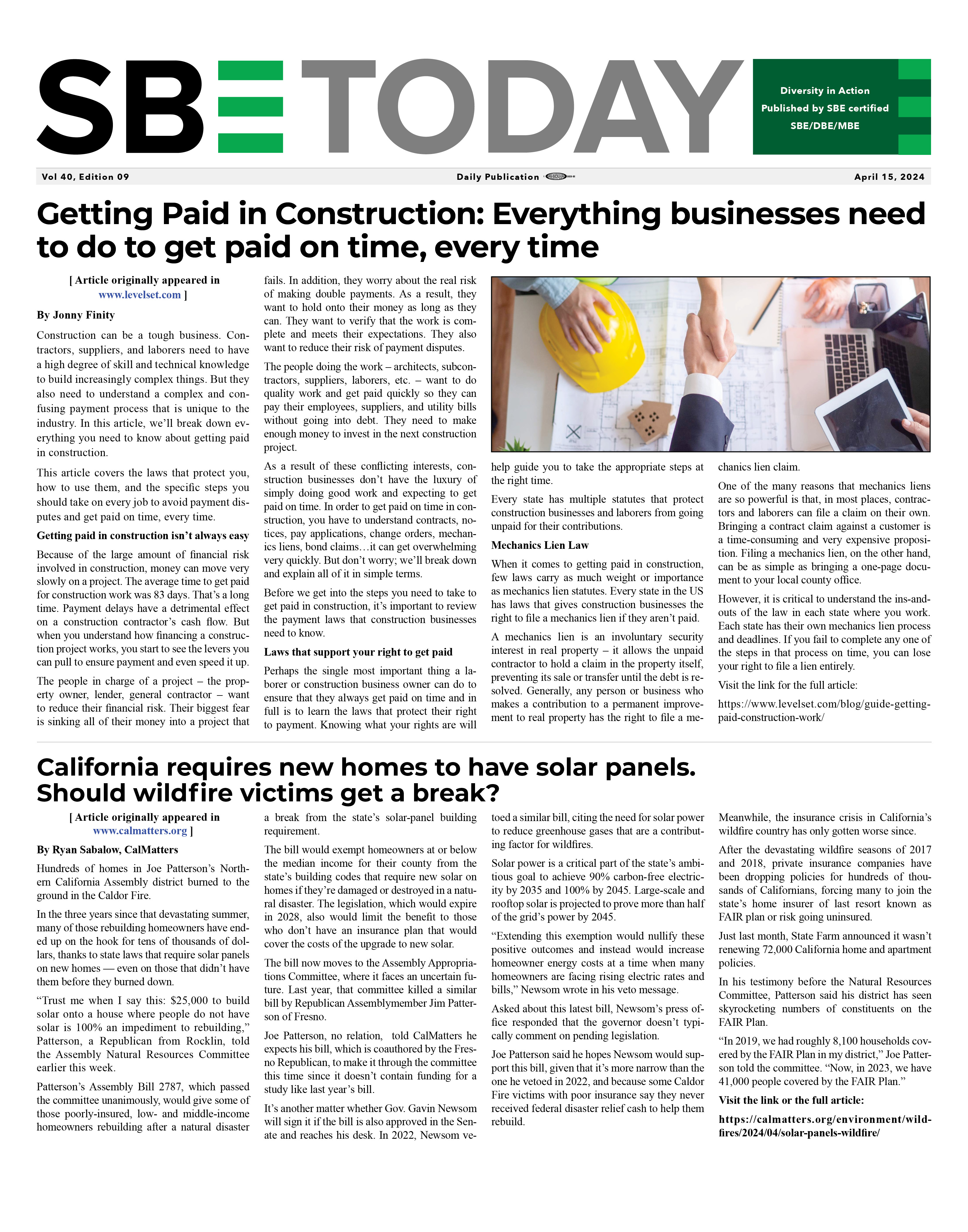|
|
Why prequalification tech is a must for choosing subcontractors today
08/07/2019
[ Article was originally posted on blog.buildingconnected.com ]
By Cheri Hanes,
Choosing subcontractors for your projects is a lot like choosing a mate. You’re going to go through a lot together. Even in the very best relationships, or on the very best project, you are going to have some trying times. When it comes to choosing subs, you’re not exactly looking for a partner for life – but the duration of a project can feel like a lifetime if it’s not going well.
The solution: online prequalification technology
How to get it right, though?
Actually, modern prequalification is a lot like modern dating. In both situations, you need to sort through a tremendous amount of data at a “snapshot” level to pick the right mate. They say you have to kiss a lot of frogs to find a prince, but online prequalification platforms can help reduce the unsavory task of frog kissing to a manageable level by helping you prioritize the queue. And if the platform is network-based, it will give you the ability to analyze, sort, and select from a pool of subs by any number of criteria.
Getting the information you need to make the best decision
Increasingly, projects demand very specific things of our partner subs – and it’s often hard to find those specialized subs the old fashioned way. Modern prequalification platforms can help by allowing you to tailor your searches and dial in on the geography, market, specialty, size, etc. of subs you are considering for your projects. This increases the odds of finding a perfectly compatible sub, especially when the platform expands your Rolodex and provides more subs to pick from.
Looking at subs’ stats before you ask them to bid your work lets you funnel the right work to them. At the end of the day, this is better for everyone. Thorough prequalification gives your estimating and project teams the ability to focus on subs who can actually do the job. It’s your chance to get an overview before you receive their bid or rely on their number for a budget, and they get to spend their time bidding work that they will actually have a chance of winning and executing well. Because you can know a lot more about the potential subs before you sit down with them to discuss scope and schedule, you have a higher chance of success and can ask better questions. This approach ultimately saves everyone time and wasted effort.
Understanding what causes relationships to fail
Most importantly, knowing and tracking all this information allows you to make decisions that lessen the chance that a sub will fail and affect your project’s success. What causes subs to fail? Why would your beautiful relationship fall apart? Subcontractor default data shows financial issues, labor issues, and quality issues top the list. And, unfortunately, as with dating, we often cause the problems ourselves.
Financially, subs don’t usually starve to death; they bite off more than they can chew. This can be a result of your level of comfort with their past work. If a sub always does projects for you in the $1 million range, and you give them a $2 million job because they did so well, you just might be “loving them to death.” I have seen it over and over again. Subs’ project sizes should be carefully grown at a measured rate. Your financial analysis can prevent overloading them if you compare your project stats against the subs’ past projects and use that information to make calculated decisions.
“Safety still looks at safety, finance still looks at financials, etc. The difference is in the ability to search and crunch a lot of data, make decisions based on all factors, and increase the ease of the workflow.”
Cheri HanesConstruction Risk Engineer at AXA XL
Technology makes it easier to sort through and assess all these details. From an overall perspective, the process is not that different from the traditional, paper-based subcontractor selection process. Safety still looks at safety, finance still looks at financials, etc. The difference is in the ability to search and crunch a lot of data, make decisions based on all factors, and increase the ease of the workflow. Instead of passing a file around to the different parties, everyone who needs to sign off can do their diligence at once and easily document their conclusions.
Overcome selection bias by getting a fuller picture
Another important function of prequalification is that it can help you overcome the biases we all have towards the familiar. Interestingly, default claims data supports that subs in business over 20 years make up the largest proportion of sub defaults, but those are the very subs your teams trust the most.
There are a lot of factors that add up to this phenomenon – succession, growth, technology – but the takeaway is that just because a sub was at the top of their game even just last year does not mean they are up to the job you are bidding now. Past experience is important to consider, but it has to be viewed through the lens of current data and fit for the work you are considering awarding to them. This is the kind of analysis that modern prequalification methods empower: the ability to look at a sub holistically, including past performance, present financial standing, workforce, and typical project size. It’s very challenging to keep all this coordinated absent a technology solution.
At the end of the day, you are the one bearing the consequences of these decisions. Sometimes a potential partner just isn’t quite right — for you — right now. Just because they’re not right for a particular project does not mean they aren’t a very fine sub with many sterling qualities and maybe even a perfect fit for your next project, or the project down the street. You need to let them go pursue those other opportunities. The old saw says “If you love them, let them go.” Today, I’d say that sometimes the kindest thing you can do for a subcontractor is let them go.
About Cheri Hanes:
Cheri has amassed more than 25 years of industry experience in preconstruction, operations, and project management. Before joining AXA XL in 2012, Cheri’s most recent role was with Yates Construction’s North Texas Division in Operations and Sustainability Management. Prior to that, she served in Preconstruction and Sustainability for Lendlease Dallas and as the Subcontractor Default Insurance (SDI) Prequalification Specialist, where she participated in the development and implementation of their national subcontractor prequalification process.
Her passion for the “on the ground” risks surrounding subcontractor default has its roots in her experience as a Partner in a residential and tenant improvement construction company where she navigated the disruption of subcontractors’ failure to perform regularly. Cheri is a Construction Risk Insurance Specialist (CRIS), LEED Accredited Professional (LEED AP), and a Clemson University certified Construction Document Specialist (CDS).
About AXA XL:
AXA XL, the property, casualty, and specialty risk division of AXA, provides insurance and risk management products and services for mid-sized companies through to multinationals, and reinsurance solutions to insurance companies globally. We partner with those who move the world forward. To learn more, visit www.axaxl.com.
SOURCE: https://blog.buildingconnected.com/why-prequalification-tech-is-a-must-for-choosing-subcontractors-today/
Back To News
|

SBE Northeast
Louisiana Business Journal Archive Archive
|




